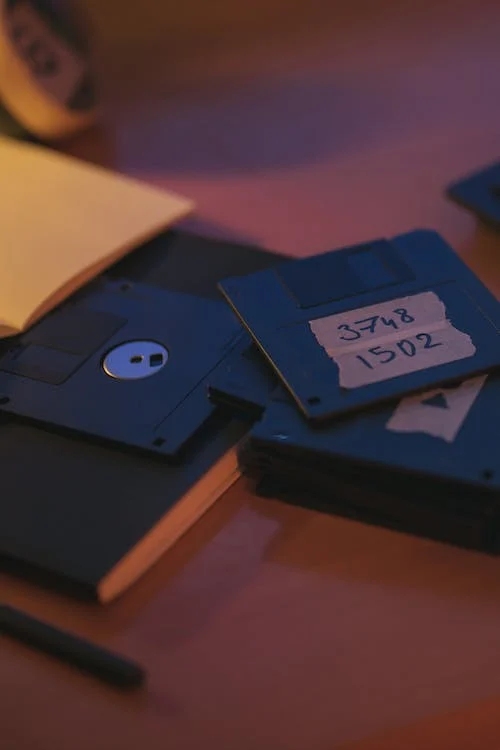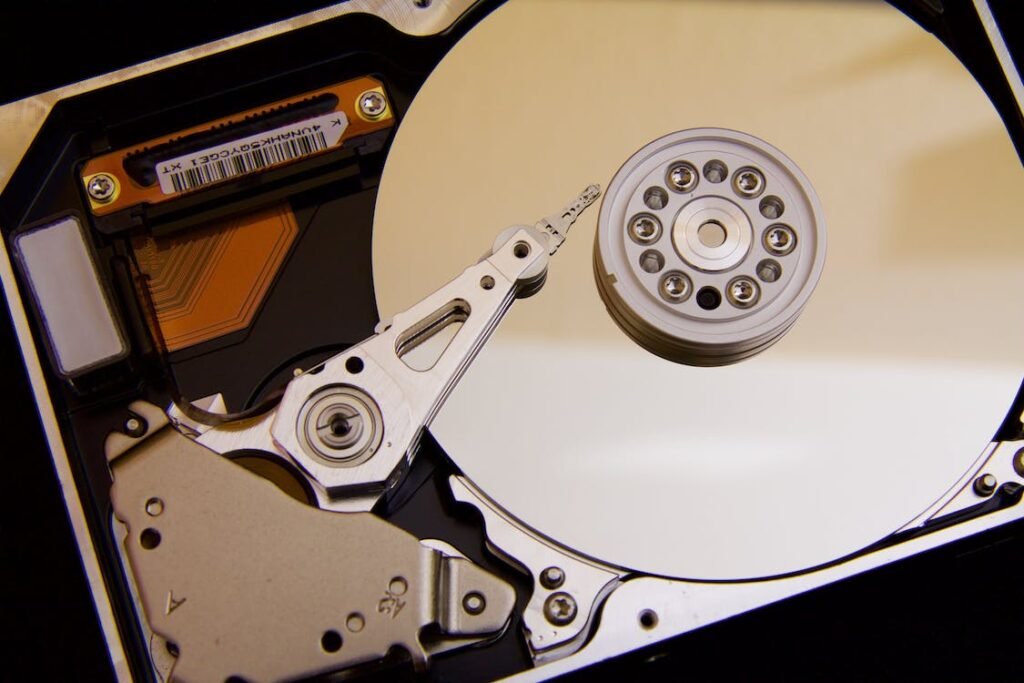Floppy discs are still in use in a surprising range of sectors, including stitching and aviation, among others. However, the supply is at an all-time low at this point.
During a rodeo in Mississippi in February, when Mark Necaise was down to his last four floppy discs, he started to get worried about his situation.
Necaise provides custom embroidery services on jackets and vests, and he travels over the state to visit horse shows. “All of the winners would get a jacket and we’d put the name of the farm or the name of the horse or whatever on it,” says Necaise.
It was five years ago when he purchased a pre-owned machine from the Japanese embroidery equipment expert Tajima for the sum of $18,000. The machine was created in 2004. Floppy discs were his sole option for transferring the blueprints from his computer to the machine, as no other method was available.
“We started with eight discs, but unfortunately four of them stopped working, which made me very uneasy,” he adds. “We were unable to retrieve any data from those discs.” I tried reformatting them in attempt to get them to function correctly, but it was to no use. It gave me pause to think that perhaps I wouldn’t be able to carry on with the stitching.

Floppy discs were still widely utilised during the time when Necaise’s Tajima machine was manufactured. They were especially popular in Japan, where they were in use for official government operations up until the previous year. Even though the last major producer of floppy discs halted production of them in 2010, devices that rely on them continue to exist. These machines range from plastic moulding equipment to embroidery machines, as well as medical equipment and aeroplanes. The supply of discs, however, is decreasing, and it will eventually run out.
Florian Cramer, a writer and director who in 2009 compressed every Oscar-nominated film from that year into animated GIFs on two floppy discs as a reflection on Hollywood’s crackdown on digital piracy, says, “Personally, I think the floppy disc should die.” Cramer did this as a criticism on Hollywood’s crackdown on digital piracy. “From a scientific point of view, it’s a hazardous medium. To put it simply, it’s trash plastic… In all honesty, it’s the kind of stuff that shouldn’t still be around.”
The majority of firms that still use floppy discs are either tiny enterprises or companies with thin profit margins that either never got around to changing their equipment or discovered that doing so would be prohibitively expensive.
The maintenance manager at Geosky, a freight airline located in Tbilisi, Georgia, Davit Niazashvili, utilises floppy discs to deploy crucial upgrades to two 747-200s that are 36 years old and were first delivered to British Airways in 1987: When a new version of the software is made available, we are required to save it on two 3.5-inch floppy discs. According to Niazashvili, “because there are no more computers that come equipped with built-in floppy drives, we were forced to locate an external drive.” After that, we update the flight management system on the aircraft by transporting the discs there. The procedure lasts for around an hour.
The updates are provided once every 28 days in accordance with a fixed global timetable, which has already been established through the year 2029. The updates include crucial data like as modifications to runways and navigational aids.
“In this day and age, it is quite challenging to get floppy discs. According to Niazashvili, “We actually purchase them from Amazon.” Because they are so delicate and prone to malfunctioning, we will only be able to utilise each one a maximum of three times before having no choice but to dispose of it. However, we cannot avoid doing it. It shouldn’t be an issue at all. We are content with it so long as floppy discs continue to be commercially accessible.
There are less than twenty Boeing 747-200s still in operation around the world, and they are all configured for cargo or military use. Six are in service with the United States Air Force, with two serving in the role of Air Force One. It is uncertain whether they currently utilise floppy discs as well, however the United States military used even older 8-inch floppy discs in its nuclear weapons until 2019. This practise lasted until 2019.
Other varieties of commercial aircraft, such as the 747 and the 767, as well as earlier models of the Airbus A320, and certain business jets, such as Gulfstreams manufactured up to the 1990s, also employ floppy discs. These aircraft include the more recent models. It is conceivable to switch from floppy discs to USB sticks, SD cards, or even wireless transmission; but, doing so may cost thousands of dollars and would require making a modification to something that, while outdated, is known to function well.
“There are some other strange evolutionary dead ends we find ourselves tied to because everything has to bow to the gods of reliability in aviation,” says Brian Ford, who works for ACI Jet, an aircraft repair firm that is located in California. “We are still using PCMCIA cards and Zip discs, both of which are becoming increasingly difficult to locate. We have significantly longer design cycles, which constantly feel like they’re falling further behind consumer products, but we are catching up.”
After the rodeo event, Necaise made the decision to finally upgrade, but she did not purchase an altogether new computer; rather, she purchased an emulator that would convert floppy discs to USB drives. These gadgets have a price tag of around $275 apiece, replace the floppy drive with a straightforward USB interface, and are produced to order by a select number of businesses.
“Embroidery and CNC [computer-operated industrial tools for cutting materials such as metal or wood] are usually our biggest buyers,” says Joshua Paschal, who works at PLR Electronics, a firm that is based in Texas and produces emulators.
PLR developed a small number of base models that can be adapted to run on about 600 different types of devices. Their inventory includes looms, stage lighting consoles, circuit board printers, oscilloscopes, digital printers, electrocardiographs, vector signal analyzers, injection moulding machines, tube and pipe benders, dicing saws, wire cutters, plasma cutters, metal presses, sounds samplers, musical instruments such as pianos and keyboards, and computer floppy drives from manufacturers such as Sony, Panasonic, and NEC. They also have dozens of embroidery and CNC machines in their inventory.
The vast majority of these items cost thousands of dollars, and some of them aren’t even that old; hence, their owners will wish to maintain them for as long as possible: According to Paschal, “even back when USB was the standard, a lot of this equipment was never upgraded to use the standard.” They are still using floppy discs, which is particularly problematic for embroidery machines. Because of this, there was a significant opening in the market for upgrading these individuals.

People come to PLR for updates not just because they can’t locate discs, but also because they can’t acquire replacement drives. PLR is the only place they can get either. “Even when we started selling these devices 12 years ago, floppy drives were getting harder and harder to find, so I can’t imagine how difficult it must be now,” adds Paschal. “I can’t even imagine.” Although sales are declining, Paschal reports that the firm still sells between 2,000 and 3,000 units on an annual basis.
It’s possible that the floppy disc will never be completely obsolete. “There are people in the world who are still busy finding and fixing up and maintaining phonograph players from 1910,” says Lori Emerson, a professor at the University of Colorado Boulder and the founder of the Media Archaeology Lab. “So it’s really hard for me to believe that the floppy disc is just going to utterly disappear,” Emerson says.
According to Tom Persky, who owns Floppydisk.com, a website that specialises in obtaining and selling floppy discs in many formats, the lifespan of some of the industrial machinery that rely on floppy discs can be anywhere between 30 and 40 years, although many of these devices are just 20 years old.
About one thousand discs are moved out of Persky’s California warehouse each and every business day. The majority of these discs have a diameter of 3.5 inches, and many of them are brand new. He claims that twenty or twenty-five years ago, he was able to purchase a container of discs for as low as 0.07 dollars a disc. Today, he asks a dollar for each of the most popular size, which measures 3.5 inches.
The outcome of supply restrictions is often an increase in pricing; but, if this pattern continues, the supply itself will become so constricted that the economics will drive an increasing number of individuals to upgrade or replace their equipment. This will cause the market to collapse in on itself, resulting in an economic loss.
At least one variety of floppy disc, the antiquated 8-inch model that was first produced by IBM in 1971, appears to be on the point of becoming extinct. According to Persky, “there aren’t any left, and we sell the ones we have for $5 [each] in boxes of tens,” Regarding the 3.5-inch floppy discs, he is unable to provide an accurate count of how many additional discs are available.
Persky states that there is a worldwide inventory of discs that were made 10, 20, or even 30 years ago. “There is a worldwide inventory of discs,” This stock is not subject to change. Simply taking one day at a time, we are making quick work of it. The extent of its dimensions is completely unknown to me. It’s probably unbelievable enormous, but it’s spread out across a wide area. There is no one who owns a half million discs, yet there are a half million individuals who own a 10-pack.
The arrival of the singularity is not something that Persky intends to wait for. He is 73 years old and claims that he will only continue to work for another five years. He is under the impression that there is no one “dumb enough” to attempt to succeed him as CEO of the corporation. “I’m in an aeroplane, and I’m 50 miles away from the airport, and I’ve run out of gas,” he adds. “It is up to me to successfully land the plane.”
To read more, Visit Britainobserver.co.uk
